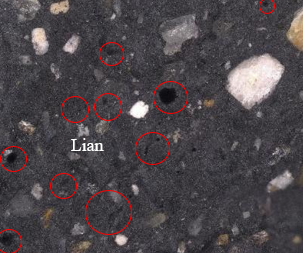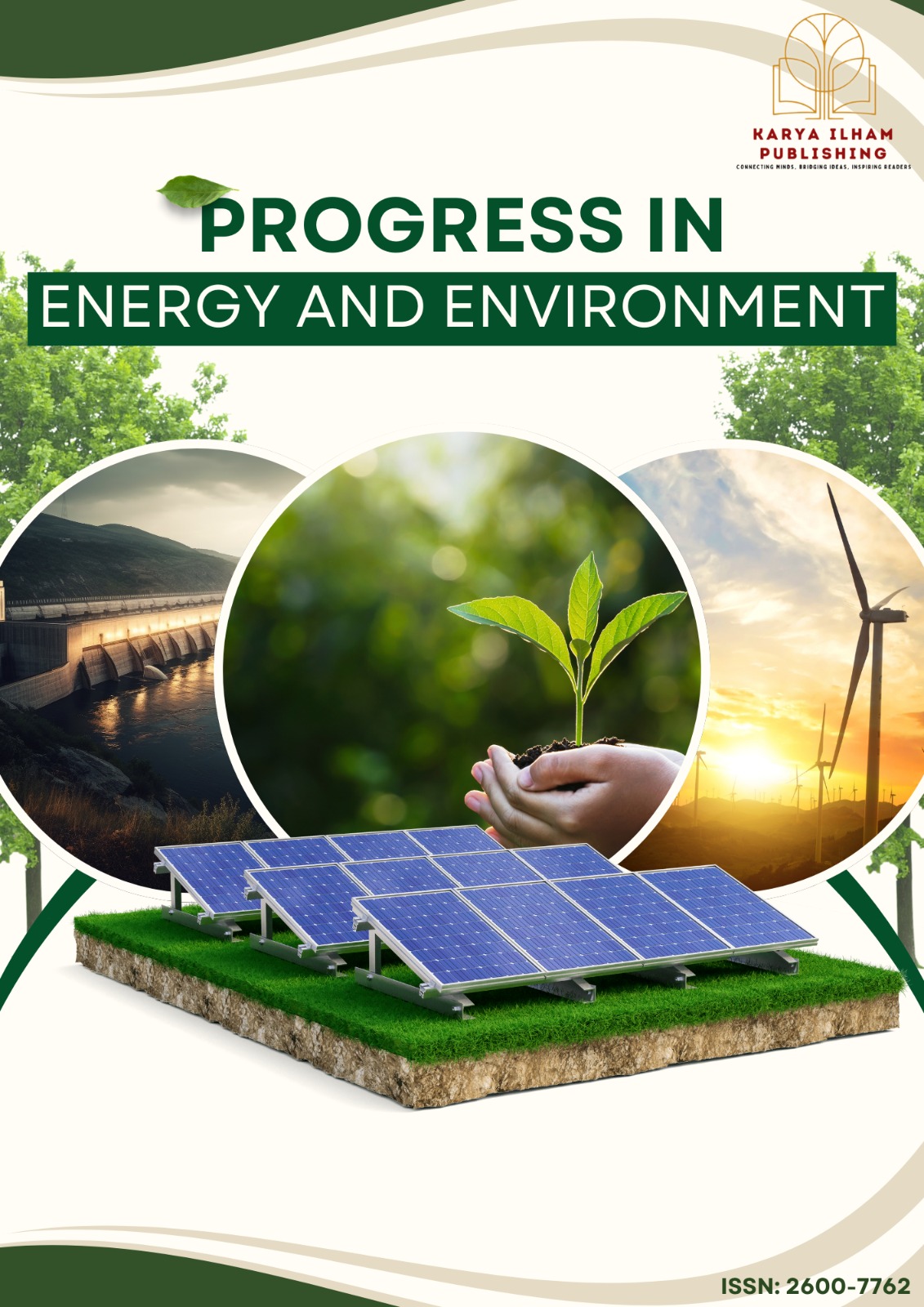High-Performance Cementitious Composites Made with Rice Husk Ash as Partial Replacement of Cement Containing Nano Additives
Komposit Simen Berkekuatan Tinggi Dibuat dengan Abu Sekam Padi Sebagai Pengganti Separa Simen yang Mengandungi Bahan Tambah Nano
DOI:
https://doi.org/10.37934/progee.31.2.2950Keywords:
Rice Husk Ash (RHA), High Performance Cementitious Composite, Nano silica (NS), XSeed STE (XS)Kecacatan Bangunan, Faktor Klimatik, Penyelenggaraan, Kemerosotan, KelembapanAbstract
This research was to compare rice husk ash (RHA) concrete with which nano additives is better to maintain or enhance its workability and mechanical properties. RHA were used as partial replacement material of cement containing nano additives (Nano Silica and X-Seed XTE). In this study, the amount of RHA remained constant at the replacement dosage of 40% by binder weight throughout the experiment while NS additives was utilized at the replacement level of 5%, 7.5% and 10% whereas X-Seed STE was 0.2%, 0.4% and 0.6%. On the other hand, the w/c ratio and s/b ratio were 0.32 and 1.00 respectively. 7 different mix design were tested at the curing age of 2 days, 7 days and 28 days. Various tests were conducted to determine the mechanical and durability properties of these specimens such as flow table test, compressive strength test, flexural strength test, water absorption test, total porosity test and so on. Additionally, digital microscope analysis also conducted to determine the microstructural behavior of RHA concrete containing nano additives.
Kajian ini bertujuan untuk membandingkan konkrit abu seam padi (RHA) dengan tambahan nano yang lebih untuk mengekalkan atau meningkatkan keliatan kerja dan sifat mekanikalnya. RHA digunakan sebagai bahan pengganti separa bagi simen yang mengandungi tambahan nano (Nano Silika dan X-Seed XTE). Melalui kajian ini, jumlah RHA telah dikekalkan dengan dos pnggantian 40% berat pengikat sepanjang eksperimen manakala tambahan NS digunakan panda tahap penggantian 5%, 7.5% dan 10% manakala X-Seed XTE adalah 0.2%, 0.4% dan 0.6%. Selain itu, nisbah air dan nisbah pasir merupakan 0.32 dan 1.00 masing-masing. 7 spesimen yang berbeza telah diuji pada 2 hari, 7 hari dan 28 hari. Pelbagai ujian dijalankan untuk menentukan sifat-sifat mekanikal dan tahan lama spesimen ini seperti ujian meja aliran, ujian kekuatan mampatan, ujian kekuatan lentur, ujian penyerapan air, ujian porositi total dan lain-lain. Tambahan pula, analisis menggunakan mikroskop digital juga dijalankan untuk menentukan tingkah laku mikrostruktur konkrit RHA yang mengandungi bahan tambah nano.
References
[1] Leong Tuck Lun, Effects Of Rice Husk Ash (Rha) Produced From Different Temperatures On The Performance Of Concrete, Universiti Tunku Abdul Rahman, 2015.
[2] R. Khan, A. Jabbar, I. Ahmad, W. Khan, A.N. Khan, and J. Mirza, Reduction in Environmental Problems Using Rice-Husk Ash in Concrete. Construction and Building Materials 30 (2012) 360–365. https://doi.org/10.1016/j.conbuildmat.2011.11.028
[3] Joe Kullman, Curbing Concrete’s Carbon Emissions with Innovations in Cement Manufacturing, Arizona State University News (2023). https://news.asu.edu/20231017-curbing-concretes-carbon-emissions-innovations-cement-manufacturing (accessed May 17, 2025).
[4] A. Akbar, and K.M. Liew, Assessing Recycling Potential of Carbon Fiber Reinforced Plastic Waste in Production of Eco-Efficient Cement-Based Materials. Journal of Cleaner Production 274 (2020) 123001. https://doi.org/10.1016/j.jclepro.2020.123001
[5] Maarten Elferink, and Florian Schierhorn, Global Demand for Food Is Rising. Can We Meet It?, (2016). https://hbr.org/2016/04/global-demand-for-food-is-rising-can-we-meet-it (accessed May 17, 2025).
[6] Ahmad Zairy Zainol Abidin, Sociological Issues and Challenges of Rice Production in Malaysia, (2023). https://ap.fftc.org.tw/article/3473 (accessed May 17, 2025).
[7] M. Singh, Coal bottom ash, in: Waste and Supplementary Cementitious Materials in Concrete, Elsevier, 2018: pp. 3–50. https://doi.org/10.1016/B978-0-08-102156-9.00001-8
[8] L. Hu, Z. He, and S. Zhang, Sustainable Use of Rice Husk Ash in Cement-Based Materials: Environmental Evaluation and Performance Improvement. Journal of Cleaner Production 264 (2020) 121744. https://doi.org/10.1016/j.jclepro.2020.121744
[9] F. Althoey, O. Zaid, R. Martínez-García, F. Alsharari, M. Ahmed, and M.M. Arbili, Impact of Nano-Silica on the Hydration, Strength, Durability, and Microstructural Properties of Concrete: A State-of-the-Art Review. Case Studies in Construction Materials 18 (2023) e01997. https://doi.org/10.1016/j.cscm.2023.e01997
[10] G. Anto, K. Athira, N.A. Nair, T.Y. Sai, A.L. Yadav, and V. Sairam, Mechanical Properties and Durability of Ternary Blended Cement Paste Containing Rice Husk Ash and Nano Silica. Construction and Building Materials 342 (2022) 127732. https://doi.org/10.1016/j.conbuildmat.2022.127732
[11] Master X-Seed, Unique Strength-Enhancing Concrete Admixture, Master X-Seed (2023). https://master-builders-solutions.com/en-us/products/master-x-seed/ (accessed May 17, 2025).
[12] Shivram B Bagade, Urban Concrete: Requisites & Remedies, (2020). https://www.nbmcw.com/product-technology/construction-chemicals-waterproofing/concrete-admixtures/urban-concrete-requisites-remedies.html (accessed May 17, 2025).
[13] C.B. Cheah, K. Khaw Le Ping, J.J. Liew, R. Siddique, and W. Tangchirapat, Influence of Coal Bottom Ash Aggregate Grading on Properties of GGBS Binary Blended Cement Mortar. Case Studies in Construction Materials 21 (2024) e03739. https://doi.org/10.1016/j.cscm.2024.e03739
[14] C.B. Cheah, L.E. Tan, and M. Ramli, The Engineering Properties and Microstructure of Sodium Carbonate Activated Fly Ash/ Slag Blended Mortars with Silica Fume. Composites Part B: Engineering 160 (2019) 558–572. https://doi.org/10.1016/j.compositesb.2018.12.056
[15] S. Kawashima, P. Hou, D.J. Corr, and S.P. Shah, Modification of Cement-Based Materials with Nanoparticles. Cement and Concrete Composites 36 (2013) 8–15. https://doi.org/10.1016/j.cemconcomp.2012.06.012
[16] F. Torabian Isfahani, E. Redaelli, W. Li, and Y. Sun, Effects of Nanosilica on Early Age Stages of Cement Hydration. Journal of Nanomaterials 2017 (2017) 1–9. https://doi.org/10.1155/2017/4687484
[17] E. Ghafari, H. Costa, E. Júlio, A. Portugal, and L. Durães, The Effect of Nanosilica Addition on Flowability, Strength and Transport Properties of Ultra High Performance Concrete. Materials & Design 59 (2014) 1–9. https://doi.org/10.1016/j.matdes.2014.02.051
[18] T. Phoo-ngernkham, P. Chindaprasirt, V. Sata, S. Hanjitsuwan, and S. Hatanaka, The Effect of Adding Nano-SiO2 and Nano-Al2O3 on Properties of High Calcium Fly Ash Geopolymer Cured at Ambient Temperature. Materials & Design 55 (2014) 58–65. https://doi.org/10.1016/j.matdes.2013.09.049
[19] P.S. Deb, P.K. Sarker, and S. Barbhuiya, Sorptivity and Acid Resistance of Ambient-Cured Geopolymer Mortars Containing Nano-Silica Cement and Concrete Composites 72 (2016) 235–245. https://doi.org/10.1016/j.cemconcomp.2016.06.017
[20] S. Lim, H.-S. Lee, and S. Kawashima, Pore Structure Refinement of Cement Paste Incorporating Nanosilica: Study with Dual Beam Scanning Electron Microscopy/Focused Ion Beam (SEM/FIB). Materials Characterization 145 (2018) 323–328. https://doi.org/10.1016/j.matchar.2018.08.045
[21] S. Bai, X. Guan, H. Li, and J. Ou, Effect of the Specific Surface Area of Nano-Silica Particle on the Properties of Cement Paste. Powder Technology 392 (2021) 680–689. https://doi.org/10.1016/j.powtec.2021.07.045
[22] M. Ranjan, S. Kumar, and S. Sinha, Nanosilica’s Influence on Concrete Hydration, Microstructure, and Durability: A Review. Journal of Applied Engineering Sciences 14 (2024) 322–335. https://doi.org/10.2478/jaes-2024-0040
[23] S. Abdul Kudus, Effect of Rice-Husk as Replacement Cement on Mechanical Properties Concrete. Journal of Mechanical Engineering 20 (2023) 91–104. https://doi.org/10.24191/jmeche.v20i2.22056.
[24] A. Abolhasani, B. Samali, and F. Aslani, Rice Husk Ash Incorporation in Calcium Aluminate Cement Concrete: Life Cycle Assessment, Hydration and Strength Development. Sustainability 14 (2022) 1012. https://doi.org/10.3390/su14021012
[25] I. S., P.K. S., D. A., and M. Pichumani, The Interplay among Particle Packing, Binder, and Strength: Amelioration of Ultra-High Performance Concrete with Nanomaterials, a Hope or Hype?, European Journal of Environmental and Civil Engineering 29 (2025) 618–646. https://doi.org/10.1080/19648189.2024.2411300
[26] Y. Jiang, J. Huo, H. Qiao, Y. Lei, L. Jia, and Y. Zhang, Synthesis of C-S-H Accelerating Admixture and Its Effect on Mechanical and Hydration Properties of Engineering Cementious Composites. Case Studies in Construction Materials 20 (2024) e02993. https://doi.org/10.1016/j.cscm.2024.e02993
[27] Oliver Mazanec, 11 Reasons to Use Master X-Seed STE for Strong, CO2-Optimized Concrete, Master Builder Solutions (2022). https://blog.master-builders-solutions.com/en/11-reasons-to-use-master-x-seed-ste-for-strong-co2-optimized-concrete (accessed May 17, 2025).
[28] X. Li, J. Bizzozero, and C. Hesse, Impact of C-S-H Seeding on Hydration and Strength of Slag Blended Cement, Cement and Concrete Research 161 (2022) 106935. https://doi.org/10.1016/j.cemconres.2022.106935
[29] S. Wang, P. Zhao, Y. Tian, and J. Liu, Effects of C-S-H Seed Prepared by Wet Grinding on the Properties of Cement Containing Large Amounts of Silica Fume. Polymers 16 (2024) 2769. https://doi.org/10.3390/polym16192769
[30] J. Ren, X. Luo, R. Bai, C. Pan, and J. Zhang, Pore Characteristics of Different Phase in Nano-Modified Concrete and Their Influences on the Compressive Strength. Journal of Building Engineering 46 (2022) 103784. https://doi.org/10.1016/j.jobe.2021.103784
[31] N.R. Mohanta, and M. Murmu, Alternative Coarse Aggregate for Sustainable and Eco-Friendly Concrete - A Review. Journal of Building Engineering 59 (2022) 105079. https://doi.org/10.1016/j.jobe.2022.105079
[32] V. Jain, G. Sancheti, and B. Jain, Non-Destructive Test Analysis on Concrete with Rice Husk Ash and Crushed Stone Additives. Materials Today: Proceedings 60 (2022) 622–626. https://doi.org/10.1016/j.matpr.2022.02.128
[33] S.A. Endale, W.Z. Taffese, D.-H. Vo, and M.D. Yehualaw, Rice Husk Ash in Concrete. Sustainability 15 (2022) 137. https://doi.org/10.3390/su15010137
[34] H. Liu, Y. Zhang, R. Tong, Z. Zhu, and Y. Lv, Effect of Nanosilica on Impermeability of Cement‐Fly Ash System. Advances in Civil Engineering 2020 (2020). https://doi.org/10.1155/2020/1243074
[35] J.O. Tanimola, and S. Efe, Recent Advances in Nano-Modified Concrete: Enhancing Durability, Strength, and Sustainability through Nano Silica (NS) and Nano Titanium (NT) Incorporation. Applications in Engineering Science 19 (2024) 100189. https://doi.org/10.1016/j.apples.2024.100189
[36] S. Rai, and S. Tiwari, Nano Silica in Cement Hydration. Materials Today: Proceedings 5 (2018) 9196–9202. https://doi.org/10.1016/j.matpr.2017.10.044
[37] F. Qadri, and N. Garg, Early-Stage Performance Enhancement of Concrete via Commercial C-S-H Seeds: From Lab Investigation to Field Implementation in Illinois, US. Case Studies in Construction Materials 19 (2023) e02353. https://doi.org/10.1016/j.cscm.2023.e02353
[38] W. He, and G. Liao, Effects of Nano-C-S-H Seed Crystal on Early-Age Hydration Process of Portland Cement, Fullerenes. Nanotubes and Carbon Nanostructures 30 (2022) 365–372. https://doi.org/10.1080/1536383X.2021.1940969
[39] Y.H. Labaran, N. Atmaca, M. Tan, K. Atmaca, S.A. Aram, and A.T. Kaky, Nano-Enhanced Concrete: Unveiling the Impact of Nano-Silica on Strength, Durability, and Cost Efficiency. Discover Civil Engineering 1 (2024) 116. https://doi.org/10.1007/s44290-024-00120-9
[40] S. Avudaiappan, S. Prakatanoju, M. Amran, R. Aepuru, E.I. Saavedra Flores, R. Das, R. Gupta, R. Fediuk, and N. Vatin, Experimental Investigation and Image Processing to Predict the Properties of Concrete with the Addition of Nano Silica and Rice Husk Ash. Crystals 11 (2021) 1230. https://doi.org/10.3390/cryst11101230
[41] F. Qadri, S.R. Kumar, and N. Garg, Impact of C–S–H Seeds on Cementitious Hydration Kinetics: New Insights on Porosity and Microstructure. Materials Today Communications 38 (2024) 107763. https://doi.org/10.1016/j.mtcomm.2023.107763

Downloads
Published
Issue
Section
License
Copyright (c) 2025 Progress in Energy and Environment

This work is licensed under a Creative Commons Attribution-NonCommercial 4.0 International License.















